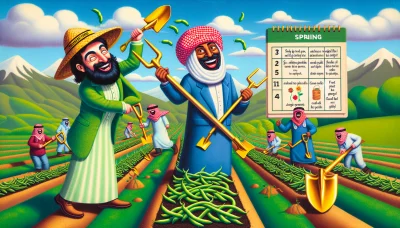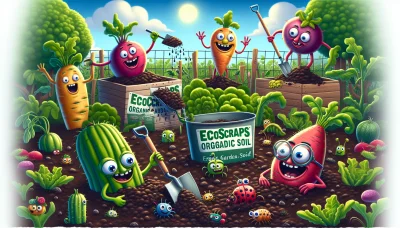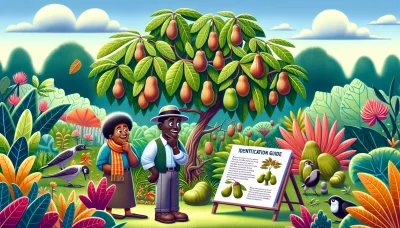How to eat mexican guava Quiz
Test Your Knowledge
Question of
How to Eat Mexican Guava: A Gardener's Guide
Mexican guava, a tropical fruit cherished for its unique flavor and nutritional benefits, has increasingly become a favorite among gardening enthusiasts. Not only does it offer a delightful addition to the garden with its lush foliage and fragrant blossoms, but the fruit itself is a versatile ingredient in many culinary creations. Growing Mexican guava requires a blend of patience, care, and a bit of gardening know-how, making it a rewarding challenge for those looking to expand their homegrown fruit repertoire.
Understanding Mexican Guava
Mexican guava, also known as Psidium guajava, is a tropical fruit native to Mexico and other parts of Central and South America. This fruit is renowned for its unique flavor, which is a blend of sweetness and tartness, making it a favorite among many. The Mexican guava tree is a highly adaptable plant, capable of thriving in a variety of soil types, although it prefers well-drained, fertile soils. It's a resilient species, resistant to drought conditions once established, which contributes to its popularity among gardeners. The fruit itself is round to pear-shaped and has a light green to yellow skin when ripe. Inside, the flesh can be white, pink, or red, depending on the variety, and contains small, edible seeds. Mexican guava is not only valued for its delicious taste but also for its nutritional benefits, as it is rich in vitamins C and A, dietary fiber, and antioxidants. Its ease of cultivation and numerous health benefits make it a cherished addition to gardens in tropical and subtropical regions around the world.
Cultivating Mexican Guava in Your Garden
- Choosing the Right Location: Select a spot in your garden that receives full sunlight for most of the day. Mexican guava trees thrive in bright environments.
- Soil Requirements: Ensure the soil is well-draining and rich in organic matter. A pH between 5 and 7 is ideal for Mexican guava trees. Amend the soil with compost before planting to improve fertility and drainage.
- Planting: Dig a hole twice as wide and the same depth as the root ball of your guava tree. Place the tree in the hole and backfill with soil, gently tamping down to remove air pockets. Water thoroughly after planting.
- Watering: Water your guava tree deeply once a week, allowing the soil to dry out slightly between waterings. Avoid overwatering, as this can lead to root rot.
- Sunlight Exposure: Ensure your guava tree gets at least 6 to 8 hours of direct sunlight daily. If necessary, prune surrounding vegetation to improve sunlight penetration.
- Mulching: Apply a 2 to 3-inch layer of organic mulch around the base of the tree to help retain soil moisture and regulate soil temperature.
- Fertilizing: Feed your guava tree with a balanced, slow-release fertilizer in the early spring and mid-summer to support healthy growth and fruit production.
- Pest and Disease Management: Regularly inspect your tree for signs of pests or diseases. Treat with appropriate organic pesticides or fungicides as necessary, following label instructions carefully.
- Pruning: Prune your guava tree in late winter or early spring to remove dead or crossing branches and to shape the tree. This promotes better air circulation and sunlight exposure, which are crucial for fruit production.
Harvesting Your Mexican Guavas
Mexican guavas are a delightful fruit to grow in your garden, offering a sweet and aromatic treat when ripe. Knowing when they're ready to harvest is key to enjoying their best flavor. Typically, Mexican guavas are ripe and ready for picking when they change color from a bright green to a light yellow or even a slight pink, depending on the variety. You'll also notice that the fruit emits a strong, sweet fragrance, a clear indicator of ripeness. Another way to test is by gently pressing the fruit; if it yields slightly under pressure, it's likely ripe. Remember, guavas should be harvested carefully to avoid bruising, using pruning shears or a sharp knife to cut the fruit from the branch. Enjoy your harvest fresh, or use it in recipes to add a tropical twist to your dishes.
Preparing Mexican Guava for Consumption
-
Washing:
- Gather your Mexican guavas.
- Under running water, gently rub each guava to remove any dirt or debris.
- Use a soft vegetable brush if necessary, especially for guavas with a more textured surface.
- Pat the guavas dry with a clean kitchen towel or paper towel.
-
Cutting:
- Place a guava on a cutting board.
- Using a sharp knife, slice off the top and bottom of the guava.
- Cut the guava in half, from top to bottom.
- If desired, slice each half into smaller pieces or wedges.
-
Preparing to Eat:
- Inspect the cut guava for any seeds. Some prefer to remove the seeds, while others enjoy the entire fruit as is.
- If removing seeds, use a small spoon or the tip of your knife to gently scoop or cut them out.
- Guava can be eaten raw, added to fruit salads, blended into smoothies, or used as a topping for desserts.
- Enjoy your freshly prepared Mexican guava!
Creative Ways to Enjoy Mexican Guava
| Recipe/Way | Ingredients | Preparation Steps |
|---|---|---|
| Guava Salad | Mexican guavas, mixed greens, feta cheese, olive oil, balsamic vinegar | 1. Slice guavas and mix with greens. 2. Crumble feta cheese on top. 3. Drizzle with olive oil and balsamic vinegar. |
| Guava Smoothie | Mexican guavas, banana, almond milk, honey | 1. Blend guavas, banana, almond milk, and honey until smooth. 2. Serve chilled. |
| Guava BBQ Sauce | Mexican guavas, tomato paste, vinegar, brown sugar, garlic, spices | 1. Blend guavas until smooth. 2. Mix with other ingredients and simmer until thickened. |
| Guava Pastry | Puff pastry, Mexican guavas, cream cheese, sugar | 1. Spread cream cheese on puff pastry. 2. Add sliced guavas and sprinkle with sugar. 3. Bake until golden. |
| Guava Snack | Mexican guavas | 1. Wash the guavas. 2. Slice and enjoy as a fresh snack. |
Benefits of Eating Mexican Guava
Mexican guava is not just a delicious fruit; it's a powerhouse of nutrients that can significantly enhance your health. Rich in vitamins A and C, it surpasses many other fruits in its antioxidant properties, which are essential for fighting off free radicals and reducing oxidative stress in the body. This makes it an excellent addition to a gardener's diet, who spends ample time outdoors and needs to protect their skin and body from environmental factors. Additionally, the high fiber content in Mexican guava supports digestive health, making it ideal for those leading an active, outdoorsy lifestyle. It's also a good source of potassium, which helps in maintaining a healthy heart rate and blood pressure, crucial for anyone engaging in physical activities like gardening. Incorporating Mexican guava into your diet can boost your immune system, help in weight management, and provide a sustained energy level, complementing the active lifestyle of gardeners and outdoor enthusiasts alike.












